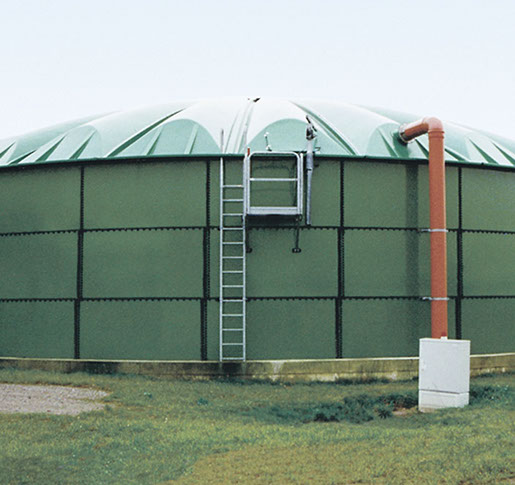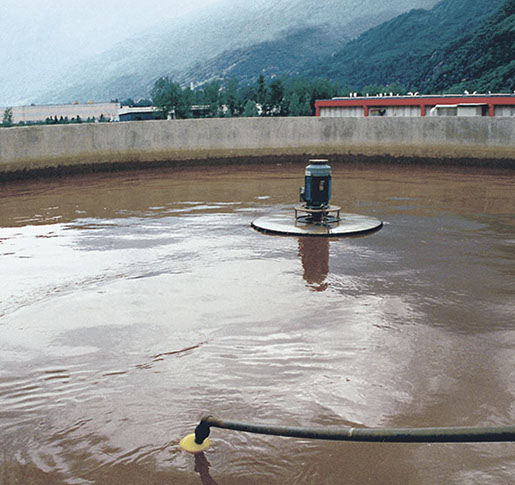
Delivery programme
Biological sewage treatment plants
Organic compounds present in the wastewater are removed through biological wastewater treatment, mainly through microorganisms in conjunction with dissolved oxygen in aerobic processes, or without oxygen for anaerobic processes. This results in inorganic compounds and biomass. The method used most frequently for biological wastewater purification is the activated sludge process.
Operating principle
In all methods of biological wastewater purification, organic pollution is removed with bacteria and other microorganisms.
Tiptronic communities are responsible for self-cleaning in bodies of water and for cleaning wastewater in sewage treatment plants; they live suspended in the aqueous phase or cling to solids in the form of biofilms. Two procedural variations of biological wastewater purification were developed from this: the activated sludge and biofilm systems. Examples of the first are all aeration processes.
Through the use of energy and technological tools (e.g., ventilation), the reactions of natural self-cleaning are optimised in biological wastewater treatment systems.










back





